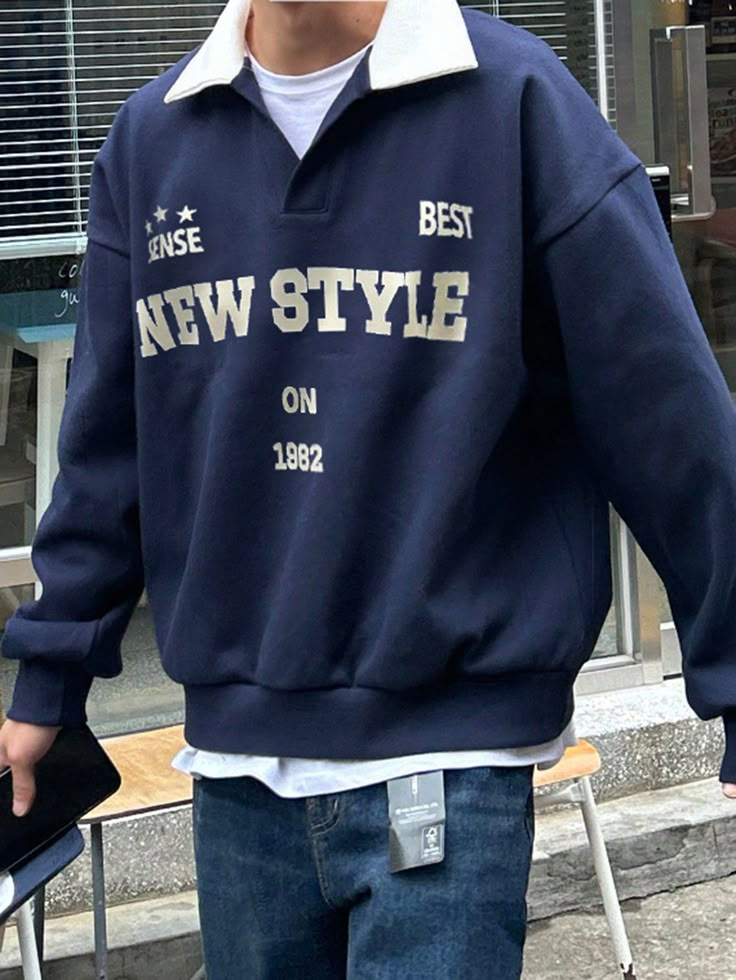Introduction: How Streetwear Redefined Global Fashion
Streetwear, once the uniform of skateboarders and rebellious youth, has grown into a powerful cultural force that transcends age, geography, and socioeconomic boundaries. Its journey from the sidewalks of Southern California to Parisian runways encapsulates more than just a fashion trend; it reflects a broader cultural shift driven by music, art, technology, and identity. Today, streetwear is not merely what people wear—it is a way they communicate their values, affiliations, and aspirations. To understand its evolution is to explore the intersections of creativity, resistance, and community that have shaped modern style.
The Birth of Streetwear: Roots in Rebellion
The origins of streetwear are deeply entwined with counterculture movements of the late 20th century. Emerging in the 1970s and 80s, particularly within the skateboarding and surf scenes of Los Angeles, early streetwear emphasized authenticity, DIY ethos, and individuality. Brands like Stüssy, founded by Shawn Stussy, epitomized this aesthetic, producing limited-run graphic tees and surfboards that resonated with a generation seeking alternatives to mainstream fashion. These early expressions of style were not driven by commercial ambition but by a desire to create and share identity within tight-knit communities.
The Role of Hip-Hop in Shaping Streetwear’s Identity
As streetwear’s roots took hold in the skate and surf worlds, another movement was brewing on the East Coast—hip-hop. In the Bronx and Brooklyn, the burgeoning hip-hop culture embraced bold, expressive styles that mixed sportswear, military influences, and luxury brands. Icons like Run-D.M.C., LL Cool J, and the Beastie Boys brought Adidas tracksuits, Kangol hats, and gold chains into the mainstream consciousness. Hip-hop’s embrace of street fashion provided a new blueprint for how clothing could convey power, defiance, and self-invention, cementing streetwear’s place in American culture.
Influence of Skateboarding Culture and DIY Aesthetics
Skateboarding culture not only birthed its own fashion but also championed the do-it-yourself (DIY) spirit that would become integral to streetwear. Skaters often customized their clothing—ripping jeans, spray-painting jackets, and hand-altering sneakers—to suit their practical and stylistic needs. This resourcefulness cultivated a raw, authentic look that rejected polished, corporate fashion. Independent skate brands like Powell Peralta, Vision Street Wear, and Santa Cruz began producing clothing that mirrored the subculture’s gritty creativity, spreading a distinct visual language that resonated beyond the skate parks.
Streetwear’s Global Spread: From Local to International Influence
By the 1990s, streetwear had begun to travel beyond its American birthplace. Influenced by music videos, skate magazines, and the internet’s early forums, youth around the world adapted the look to their local scenes. In Japan, brands like A Bathing Ape (BAPE) merged streetwear with meticulous craftsmanship and exclusive drops, creating a hybrid of American cool and Japanese precision. Meanwhile, European cities like London, Berlin, and Paris integrated streetwear aesthetics into punk, grime, and techno cultures. Streetwear became a global dialect spoken through the language of tees, sneakers, and hoodies.
The Rise of Sneaker Culture and Streetwear’s Expansion
No discussion of streetwear is complete without acknowledging the explosive rise of sneaker culture. The release of the Air Jordan 1 in 1985 signaled a pivotal moment, blending athletic performance with urban style. Sneakers evolved into coveted artifacts, with limited releases sparking massive demand and secondary markets. Collectors, resellers, and enthusiasts formed tight communities around their passion, elevating sneakers—and by extension, streetwear—into a serious cultural and economic phenomenon. Sneaker collaborations with musicians, athletes, and designers reinforced streetwear’s hybrid identity at the nexus of sports, art, and commerce.
Luxury Brands and the Mainstreaming of Streetwear
The early 2000s saw a seismic shift as luxury brands took notice of streetwear’s influence. Collaborations like Louis Vuitton x Supreme in 2017, which merged the worlds of high fashion and street credibility, shattered traditional fashion hierarchies. What was once considered “lowbrow” became aspirational. Streetwear’s emphasis on exclusivity, hype, and cultural relevance perfectly aligned with luxury brands’ desires to court younger, digitally savvy consumers. Today, it is commonplace to see streetwear sensibilities infused into haute couture collections, blurring the lines between sidewalk and catwalk.
The Art of the Drop: Hype Culture and Limited Editions
Central to streetwear’s evolution is the concept of the “drop”—limited product releases that fuel demand and cultivate a sense of urgency among consumers. This strategy, popularized by brands like Supreme and Palace, mirrors the scarcity model of fine art. Drops turn product acquisition into an event, heightening anticipation and fostering community engagement. In an era of infinite digital access, controlled scarcity offers a potent psychological lure, making streetwear less about the item itself and more about the experience of obtaining it.
Digital Landscapes and the Role of Social Media
The internet revolutionized how streetwear spread and evolved. Platforms like Instagram, Tumblr, and later TikTok provided visual showcases for emerging styles and niche brands. Influencers, bloggers, and ordinary users democratized fashion commentary, allowing trends to percolate from the ground up rather than trickle down from elite gatekeepers. Memes, viral moments, and aesthetic movements like normcore and gorpcore all owe their visibility to digital ecosystems that accelerated streetwear’s reach and mutation.
The Intersection of Art, Streetwear, and Cultural Commentary
Streetwear’s visual language often extends beyond fashion into the realms of art and political commentary. Brands collaborate with visual artists, incorporate protest imagery, and use clothing as a canvas for social critique. Whether referencing police brutality, environmental degradation, or racial inequality, streetwear has proven to be a potent medium for raising awareness and provoking dialogue. Artistic collaborations, such as Supreme’s work with Jeff Koons and Damien Hirst, further cement the synergy between wearable fashion and high art.
Streetwear’s Regional Variations Across the Globe
While streetwear shares a global language, it manifests uniquely across regions. In Tokyo’s Harajuku district, eclectic layering and neon palettes dominate. In London, influences from punk, grime, and football culture create a grittier, edgier aesthetic. Los Angeles offers laid-back, skater-informed styles, while New York exudes a more urban, polished edge. Each city absorbs streetwear and remixes it with its indigenous sounds, struggles, and spirits, ensuring the style remains vibrant, localized, and endlessly adaptable.
Sustainability Challenges and Ethical Innovation in Streetwear
As streetwear matures, it faces new challenges, particularly around sustainability. The hype-driven model often encourages overproduction and consumerism. However, a growing movement within the community advocates for ethical practices: upcycling vintage garments, using eco-friendly materials, and promoting circular fashion systems. Brands like Noah and Pangaia lead by example, demonstrating that streetwear can maintain its cool factor while embracing environmental responsibility.
Women in Streetwear: Breaking the Gender Norms
Historically dominated by male imagery and branding, streetwear is undergoing a gender revolution. Women have always been active participants in street culture, but now they are increasingly driving brand narratives, designing collections, and carving out spaces that reflect female empowerment. Brands such as HERON PRESTON, Ambush, and Melody Ehsani highlight the dynamic contributions women make to the streetwear landscape, while diverse consumer bases demand more inclusive sizing, designs, and marketing.
Streetwear and Music: A Timeless Synergy
Music has always been a powerful amplifier of streetwear culture. From the early days of hip-hop and punk to contemporary trap, K-pop, and EDM, musicians shape and popularize streetwear trends. Artists become brand collaborators, creative directors, and even founders of their own labels, blurring the lines between artist, influencer, and designer. The symbiotic relationship between music and streetwear ensures the style remains culturally potent, emotionally resonant, and deeply embedded in youth identity.
Conclusion: The Enduring Power of Streetwear’s Story
Streetwear’s remarkable journey from local subcultures to a dominant force in global fashion underscores its unique ability to adapt, innovate, and inspire. It is more than just apparel—it is a living archive of cultural movements, societal shifts, and creative rebellion. Every graphic tee, oversized hoodie, or limited-edition sneaker tells a story of community, authenticity, and aspiration.
Unlike traditional fashion cycles that operate on top-down authority, streetwear thrives on grassroots energy, where new ideas emerge organically from music, sports, art, and social commentary. It respects its origins while constantly pushing into uncharted territory, ensuring its relevance in an ever-changing world. Whether celebrated through avant-garde collaborations, driven by digital ecosystems, or transformed by demands for ethical innovation, streetwear reflects the pulse of contemporary life.


Wpbingo
Lorem ipsum dolor sit amet, consectetur adipiscing elit. Nam fringilla augue nec est tristique auctor. Donec non est at libero vulputate rutrum. Morbi ornare lectus quis justo gravida semper. Nulla tellus mi, vulputate adipiscing cursus eu, suscipit id nulla.
Wpbingo
Lorem ipsum dolor sit amet, consectetur adipiscing elit. Nam fringilla augue nec est tristique auctor. Donec non est at libero vulputate rutrum. Morbi ornare lectus quis justo gravida semper. Nulla tellus mi, vulputate adipiscing cursus eu, suscipit id nulla.
Wpbingo
Lorem ipsum dolor sit amet, consectetur adipiscing elit. Nam fringilla augue nec est tristique auctor. Donec non est at libero vulputate rutrum. Morbi ornare lectus quis justo gravida semper. Nulla tellus mi, vulputate adipiscing cursus eu, suscipit id nulla
Wpbingo
Lorem ipsum dolor sit amet, consectetur adipiscing elit. Nam fringilla augue nec est tristique auctor. Donec non est at libero vulputate rutrum. Morbi ornare lectus quis justo gravida semper. Nulla tellus mi, vulputate adipiscing cursus eu, suscipit id nulla.